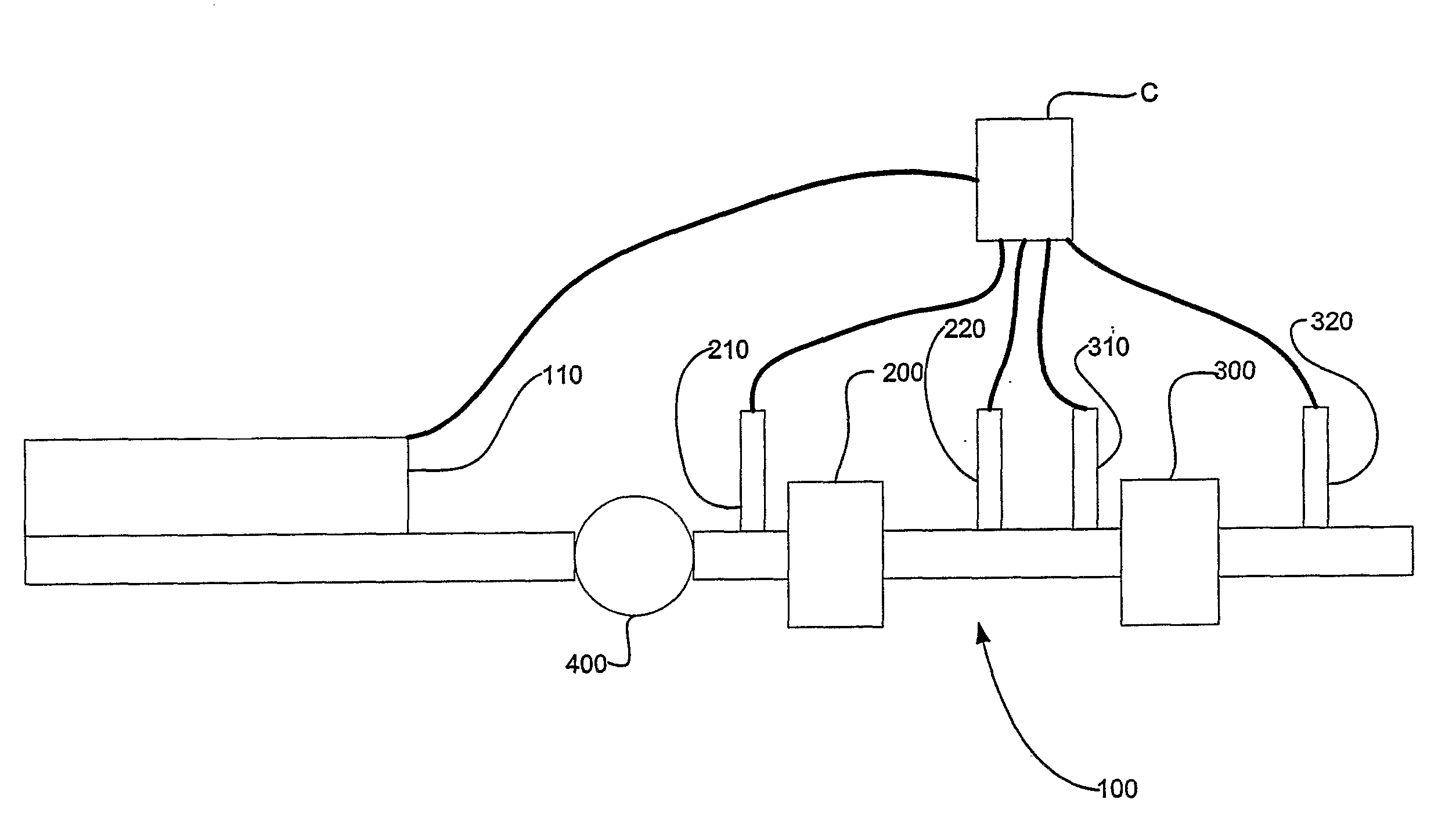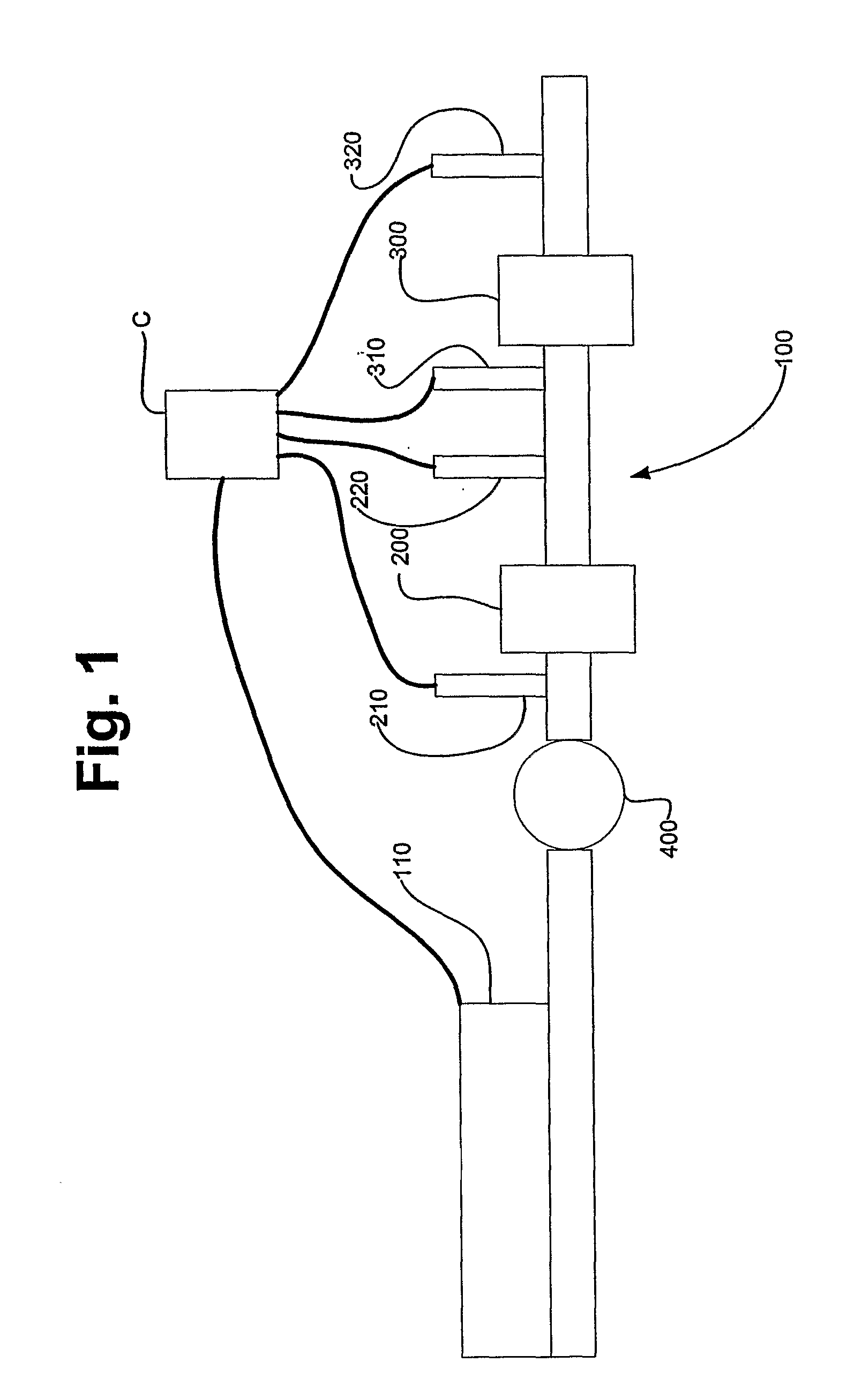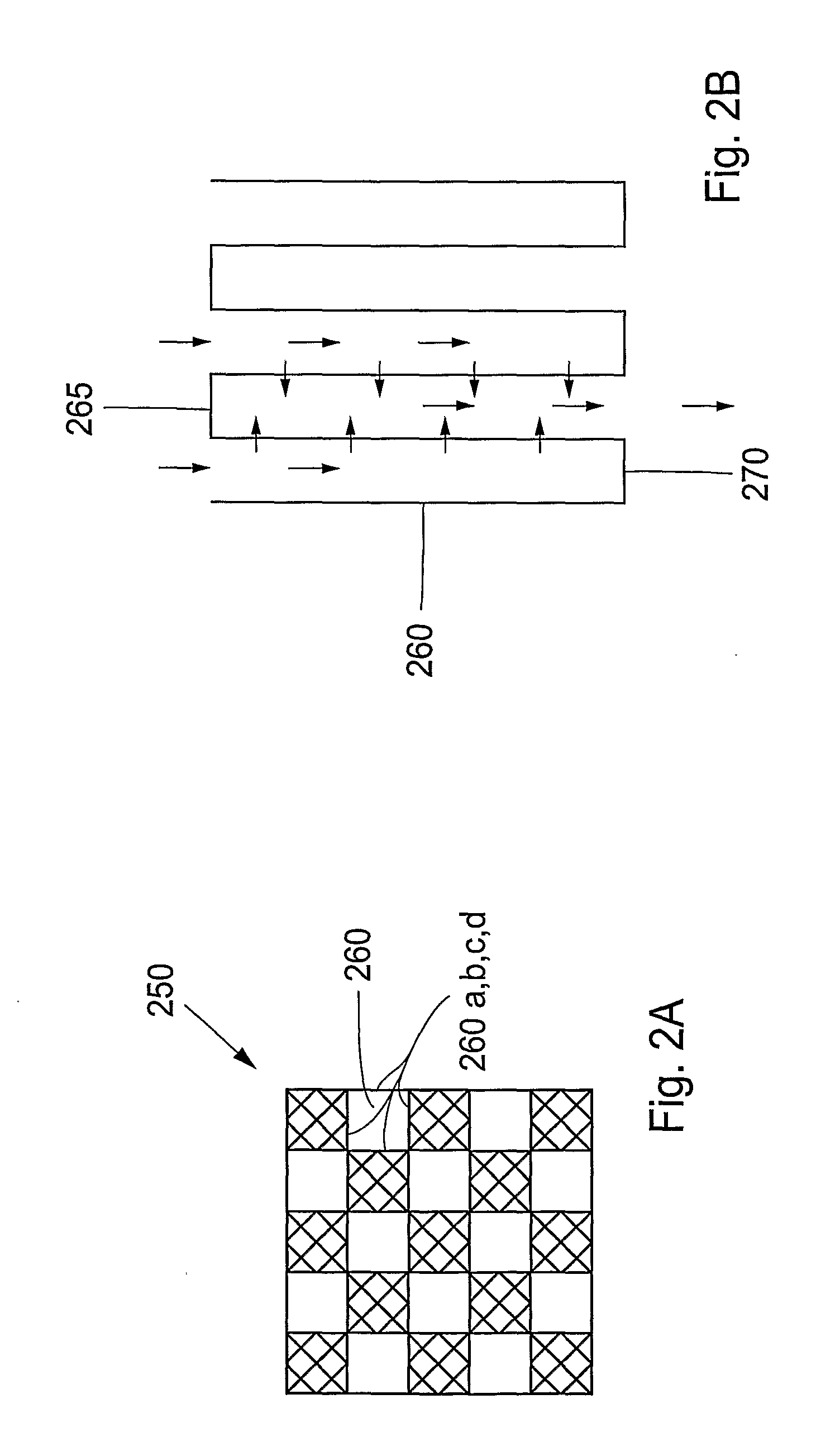Diesel catalyst system
a catalyst system and diesel technology, applied in the direction of machines/engines, mechanical equipment, surface coverings, etc., can solve the problems of inability to meet the needs of ci engines, etc., to achieve the effect of high fuel consumption, increased greenhouse effect, and simple structur
- Summary
- Abstract
- Description
- Claims
- Application Information
AI Technical Summary
Benefits of technology
Problems solved by technology
Method used
Image
Examples
Embodiment Construction
[0017]In FIG. 1, a schematic view of a catalyst system 100 according to the present invention is shown. The catalyst system 100 is connected to an exhaust system of an engine 110 and comprises a first catalyst 200, the design of which will be described later, a second catalyst 300, and an exhaust pressure governor (EPG) 400. Moreover, first and second reductant injectors 210 and 310, respectively, are mounted upstream the first catalyst 200 and upstream the second catalyst 300, respectively. The reductant may e.g. be urea, hydrocarbons, hydrogen, or any other suitable species with reducing properties. NOχ- and for NH3 sensors 220, 320 are mounted downstream the first and second catalysts, 200, 300, respectively. Alternatively, the first NOx- and for NH3 sensor 220 could be omitted.
[0018]Both catalysts 200 and 300 are so called SCR (Selective Catalyst Reduction) catalysts, whose function is well known by persons skilled in the art and briefly described above in the prior art section....
PUM
 Login to View More
Login to View More Abstract
Description
Claims
Application Information
 Login to View More
Login to View More - R&D
- Intellectual Property
- Life Sciences
- Materials
- Tech Scout
- Unparalleled Data Quality
- Higher Quality Content
- 60% Fewer Hallucinations
Browse by: Latest US Patents, China's latest patents, Technical Efficacy Thesaurus, Application Domain, Technology Topic, Popular Technical Reports.
© 2025 PatSnap. All rights reserved.Legal|Privacy policy|Modern Slavery Act Transparency Statement|Sitemap|About US| Contact US: help@patsnap.com



